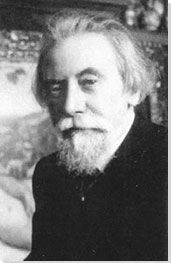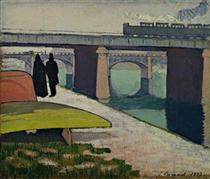
1868 - 1941
Emile Bernard

description
French artist, one of the founders of Symbolism, Synthetism and Cloisonnism, Modernist currents. His preserved correspondence with Vincent van Gogh, Paul Cezanne and Paul Gauguin remains one of the most important and unique sources of information about certain nuances in the fine art of the late 19th and early 20th centuries – in particular, the development of Modernism. The same can be said about the articles Bernard wrote in cooperation with newspapers and magazines. Bernard’s legacy contains not just paintings and drawings, but sculptures, furniture, wood engravings and tapestry projects as well.
Key ideas:
– The basic principles followed by Emile Bernard include the symbolism of images, the base of which lies in the imagination, emotional experiences and memories of the artist.
– Explaining the key features of Synthetism, Bernard outlined his vision: the essence lies in the combination (synthesis) of imaginary images and decorative colour spots. Simplification is used for a more complete disclosure of the meanings in a given image.
– Influenced by the idea of Synthetism, Emile Bernard turned to paint method of Cloisonnism (from the French word ”cloison” meaning ”partition”). The artist worked with a colour spot, capturing it in a clear contour.
Other features of Bernard’s style are decorativeness in the use of local colour spot and the immensity of the pattern. Bernard made successful attempts to combine (synthesize) ideas of pure colour with the living rhythms of life, his own reflections and impressions from nature. He consciously allowed the simplification of the image, peppering this simplicity with unusually bright, shining colours.
1868
1887
1889
1891
1905
1941
The birth of the artist
«Сloisonnism»

Participation in the exhibition

"The Society of Independent Artists”.

Created his own magazine

The death

